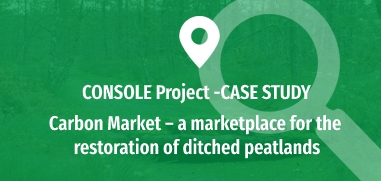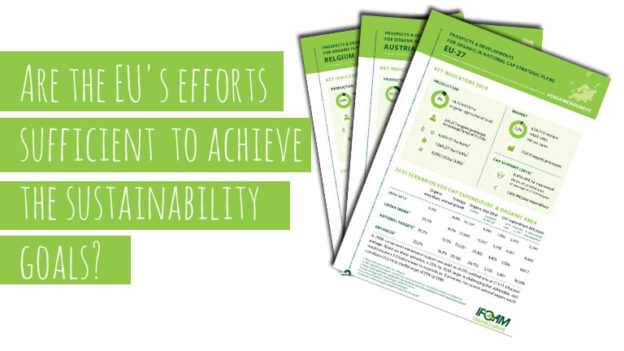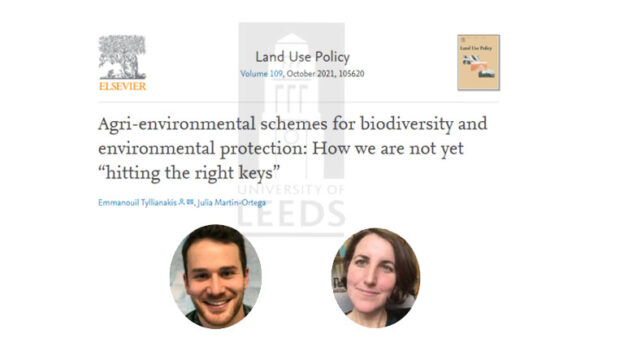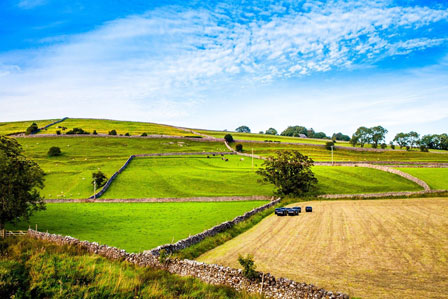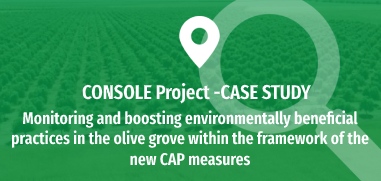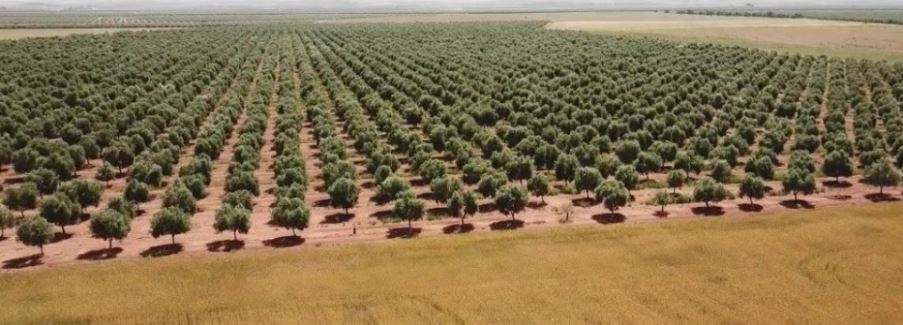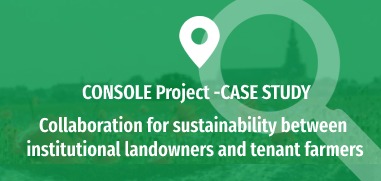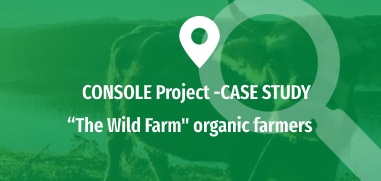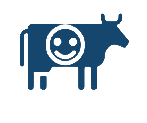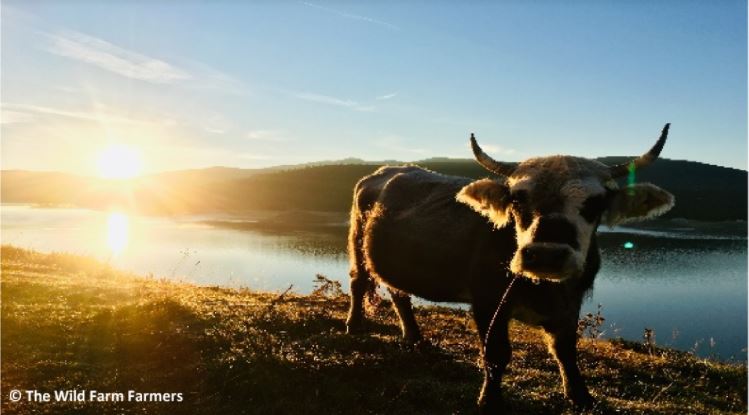Summary
The Carbon Market, launched in May 2018, is a value chain contract solution that aims to reduce greenhouse gas emissions and to increase carbon storage by restoring ditched peatlands to their natural state. The contract solution has also collective elements, since many of the peatlands have several owners. The owners of the peatland (usually individual forestland owners but can be also foundation, municipality or parish) assign a drained peatland to be restored and to leave it untouched. Until now, some 700 hectares are agreed to be restored from 10 landowners (private individuals and foundations), and negotiations with five landowners are ongoing. The restoration is financed by selling shares on the Carbon Market. In practice this means that participating people and companies give money to the Carbon Market. Investors/donors receive the carbon stock certificate, stating the amount of restored peatland and the carbon stock. The price for the donors is fixed, 800 euros per hectare. By the end on 2019, there were some 2,900 investments from 2,500 people, total sum being 820,000 euros. Companies have also been interested to collaborate with Carbon Market, and a kind of compensation product is being developed for them. Currently, there is more money than suitable peatlands to be restored.
Objectives
- Increasing carbon storage
- Safeguarding biodiversity
- Safeguarding water quality
Public Goods
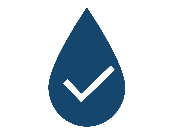
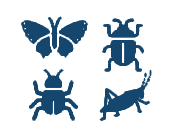
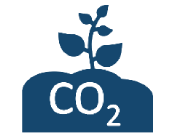
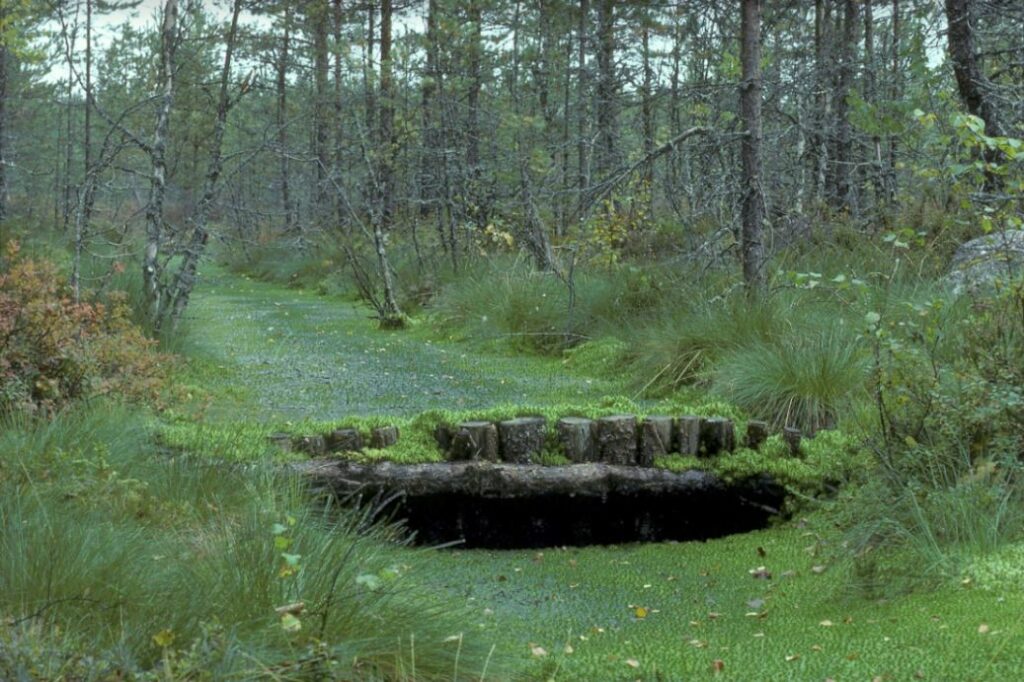
Problem description
Peatlands cover almost one third of Finland’s land area and they are one of the largest carbon stock in Finland. From 1960s to 1990s, more than half of the (original) mires were drained for forestry purposes (Southern Finland 80%, Northern Finland 40%). However, in many cases ditching efforts did not result in growth increase of forests, since the peatland areas were not fertile enough for timber production purposes. Draining of pristine mires was given up in 2001, and recent forestry related emphasis has been on ditch clearing and
associated supplementary draining. Draining alters the hydrology of mires which may destroy mire vegetation and lead to biodiversity loss, cessation of peat accumulation and increased carbon emissions. Restoration of drained peatlands, e.g. by filling in and damming the ditches and removing part of the growing trees, aims to gradually restore natural mire hydrology and original mire vegetation, and turn the peatland back to carbon sink. So far, restoration projects for peatlands have concentrated almost entirely on protected areas on state land. Carbon Market is one of the first instruments that funds
restoration of private peatlands.
The Carbon Market is founded by the Finnish Association for Nature Conservation in 2018. The initial development efforts of the Carbon Market were funded by the Kone Foundation. The aim has been to develop a new, inspiring way to mitigate climate change and to raise
funds for nature conservation. The main idea is an online donation service designed to reduce carbon emissions and increase carbon storage by restoring ditched peatlands that are unsuitable for forestry use.
Through buying shares from Carbon Market, one can directly invest in the sequestration of carbon dioxide from the atmosphere into peatlands. The investor (i.e. donor) will receive the carbon stock certificate, stating the amount of restored peatland and the carbon stock. The landowner, in turn, may offer drained peatland to the Carbon Market for restoration. The suitability of the peatland is assessed by experts of Carbon Market. The landowner allows the experts of the Carbon Market to make the restoration plan for the ditched peatland, and the Centers for Economic Development, Transport and the Environment (ELY Centers) gives permission for the restoration work. Assigning the peatland for restoration doesn’t mean a change in the ownership of the peatland but landowner has to transform it into a private protected area, which ensures the contract is binding and permanent. It is possible to get public support for protection if it is considered to be very valuable.
